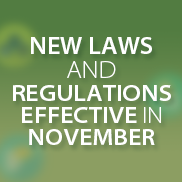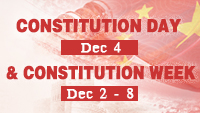Annual Report on Promoting the Rule of Law in China(2016)
IV. Reform of the Judicial System
China promoted the reform of the judicial system, further improved the main framework of the reform, improved judicial credibility and increased the sense of gain of the people to promote the implementation of the major decisions made by the central leadership.
(1) Establish the Main Framework for the Reform
The main framework of the general reform was basically established. They are the reform of the mechanism for the exercise of the judicial power with the judicial responsibility system as the core, the reform of the judicial management system with the classified management of the judicial personnel as the symbol, the reform of the judiciary with adjudication as the centre and leniency for pleading guilty and judicial transparency as the crucial points and the reform of the system of filing cases for registration and the system of applying for resident identity cards in alien places.
——The supplementary policies for the reform of the judicial responsibility system are adopted. One, in implementing the judicial responsibility system, it issued the Plan for Experiments on the Reform of the Internal Organizational Structure of People’s Courts at and under the Provincial Level, and the Opinions on the Establishment of a Disciplinary System for Judges and Procurators. Two, in improving the job security system, it issued the Plan for Experiments on the Reform of the Ranking Order for Judge Assistants, Procurator Assistants and Clerks, the Provisions on Protection for Judicial Personnel in Performing Legal Duties according to Law and the Measures for the Implementation of the Plan for Experiments on the Reform of the Wage System for Judges and Procurators. Three, in improving the system of classified personnel management, it issued the Opinions on the Establishment of the System for the Selection of Judges and Procurators Level by Level and the Opinions on the Open Selection of Legislative Workers, Judges and Procurators from among Lawyers and Law Specialists to broaden the channels for the selection of judicial personnel and standardize the selection mechanism.
——The main framework for the reform of the Judiciary was basically established. One, it issued the Opinions on Promoting the Reform of the Criminal Procedure System with adjudication as the centre, to collect, fix, preserve, examine and use evidences strictly according to law and give play to the substantive role of court sessions in finding out facts, ascertaining evidences, guaranteeing the right of action and applying the law to use systems to prevent the occurrence of framed-up and wrong cases. Two, as authorized by the NPC Standing Committee, it made experiments on the reform of the system of applying leniency for pleading guilty in criminal cases to apply leniency in substance to criminal suspects and defendants who plead guilty voluntarily to simplify the procedure, improve judicial efficiency and reduce social resistance. Three, it improves the mechanism for the exercise of power, supervision and restriction, issued the Opinions on Deepening the Standardization of Law Enforcement by Public Security Organs, the Opinions on the Establishment of the Mechanism for Connection between the Management and Use of Judicial Appraisal and the Plan for the Establishment of a Trans-departmental Platform for Information on the Concentrated Management of Property Involved in Local Cases to standardize law enforcement behaviors of public security organs and standardize the entrustment and acceptance of judicial appraisal, make arrangements for appraisers to appear in court as witnesses, and strengthen management of the property involved in cases. Four, Deepen the reform of the lawyer system. It issued the Opinions on Deepening the Reform of the Lawyer System, the Measures for the Management of the Practicing of Lawyers, the Measures for the Management of Law Firms and the Opinions on Further Strengthening the Building of Lawyers’ Associations. While guaranteeing the right of lawyers to practice, it drew the “red line” for the behaviors of lawyers and strengthened the self-discipline of the lawyers’ trade. Five, it deepened judicial transparence, formulated the provisions on publishing judgements on the Internet and the operating process for online live broadcasts of court sessions, and established the system of audio-video recording of interrogations and recording of whole processes of law enforcements. It promoted the reform of the people’s supervisor system, and broadened the channel for the orderly participation of ordinary people in the administration of justice. Six, it promoted the separation of simple cases from complex cases and the use of mediation with litigation in the resolution of disputes, issued the Some Opinions of the Supreme People’s Court on Further Promoting the Separation of Simple Cases from Complex Cases to Optimize the Allocation of Judicial Resources to deepen the separation of the simple from the complex in the procedures, judgements and general affairs to improve the efficiency of litigation.
——Improve the reform measures to make it easier for people to file law suits. The Supreme People’s Court established four more circuit courts in Nanjing, Zhengzhou, Chongqing and Xian in 2016 to complete the general geographic distribution of circuit courts and make it easier for people to file law suits. The Supreme People’s Court issued the Opinions on Further Deepening the Reform of the Diversified Dispute Resolution Mechanism in People’s Courts, and the Provisions on Specially Invited Mediation of People's Courts, and the judicial administrative organ issued the Opinions on the Development of Foreign-related Legal Service Industry, the Measures for Promoting the Work of Providing Legal Assistance to Servicemen and Their Families, the Opinions on the Participation of Social Groups in the Work of Helping and Educating Persons Released after Serving Sentences, the Opinions on Further Strengthening the Work of Community Correction and the Guiding Opinions on Promoting the Work of Industrial and Specialized People’s Mediation to provide more efficient and easer dispute resolutions.
(2) Reforms Take Roots Gradually
——Grasp the crucial matters to solidify the foundation for the reform. The Ministry of Justice started experiments on the reform of the judicial responsibility system at the beginning of 2016. It held a national meeting to promote the reform of the judicial system, further improved the system for the specified number of personnel, ascertainment of judicial responsibility, job security for judicial personnel and the centralized management of the personnel, funds and property of the local courts and procuratorates at and below the provincial level. By the end of 2016, all courts and procuratorates started experiments on the reform of the judicial responsibility system.
——Uphold the scientific orientation to ensure the quality of the reforms. One, it promoted the reform of the system for the specified number of personnel to raise the standards of specialization and professionalism. It guided local departments of justice to give prominence to the achievements and ability in handling cases and started the scientific and fair selection of personnel and established the system of removal of disqualified personnel. Two, it ascertained the judicial responsibility system for the purpose of improving the quality and efficiency of handling cases, established power lists, organized case handling teams in a scientific way and used systems and mechanisms, modern technology and case guidance to promote the change of the management and supervision from examination and approval for individual cases and signing of documents to supervision on the quality and efficiency of the whole staff and whole process in handling cases to ensure the implementation of the judicial responsibility system under which the judges hand down verdicts and the collegiate bench is responsible for carrying them out.
——Lay stress on overall planning to strengthen system integration. One, in the course of promoting the reform of the judicial responsibility system, it promoted the reform of the internal organizational structure to solve the problems of “more officers than men” and the overlapping of functions of courts and procuratorates at the basic level and integrate the resources of the judicial forces to encourage the top-notch professionals at the middle level to return to the frontline to handle cases after they were included in the specified number of personnel. Two, it promoted the reform of the criminal procedure system with adjudication as the centre and the reform of the procedure system with leniency for pleading guilty, promoted the separation of simple cases from complex cases, improved the multi-layer procedure system of small claim procedure, quick judgement procedure, summary procedure and general procedure in an effort to achieve the diversity and exquisiteness of the procedure and make the best possible use of the integral efficacy of the reform. Three, while promoting the reform of the criminal procedure system with adjudication as the centre, it explored to make experiments on the reform of the policy of giving leniency for pleading guilty to achieve the unity of fairness and efficiency and the unity of combating crimes and protecting human rights on a still higher level.
——Strengthen supervision and inspection to promote reforms to taker roots. One, it made special supervision. The Central Reform Office exercised supervision over the reform of the judicial system in Hubei and Anhui in 2016. The Central Committee of Political and Legislative Affairs, together with the Supreme People’s Court and the Supreme People’s Procuratorate, exercised two rounds of supervision in Jilin, Chongqing, Hebei, Shandong and six other provinces and autonomous regions. Moreover, the Supreme People’s Court exercised supervision over the reform of the judicial responsibility system and supplementary reforms in 28 provinces, autonomous regions and municipalities, including Beijing, Shanghai, Henan and Shanxi. In the light of the problems found in the supervision, the Supreme People’s Court held a national conference in Kunming to promote the supervision over the reform of the judicial responsibility system of the courts throughout the country, heard reports on the relevant problems, and required all courts to find and correct their own problems. The relevant central departments sent people to make inspection of the reforms of the judicial responsibility system, the system of petition-related letters and visits and the measures to prevent leading cadres from intervention in judicial activities, exercised supervision, discovered problems, summed up experience and improved the policies. Two, it made the third party evaluation. The China Law Society and the China University of Political Science and Law made the third party evaluation of the reform of the judicial system and an objective evaluation of the progress and achievements to look for problems and put forward counter proposals.
(3) Achievements in the Reforms Were Gradually Revealed
——The standards of specialization and professionalism of the judicial personnel were notably raised. After the classified management of the personnel was adopted, the problem of the nonconformity of the mode of personnel management in the courts and procuratorates with the characteristics of the judicial profession and the problem of many chief judges and procurators being assigned administrative posts instead of doing their professional jobs were fundamentally solved, the personnel structure of the courts and procuratorates and the allocation of the judicial human resources were further optimized. As a result, about 20% more personnel were assigned to their original professional jobs and more than 85% of the judicial human resources were allocated to handle cases.
——The judicial management system and the mechanism for the exercise of judicial power that conformed to the judicial rules were further improved, and the quality and efficiency of handling cases were notably improved. The subject position of judges and procurators in handling cases was further established. Judges and collegiate benches directly handled more than 98% of the cases and procurators examined and decided more than 90% of the prosecuted cases. The courts throughout the country tried and closed 19.795 million cases in 2016, 18.33% more than in the previous year, and 87.2% of the judgements of first instance were obeyed without appeals.



